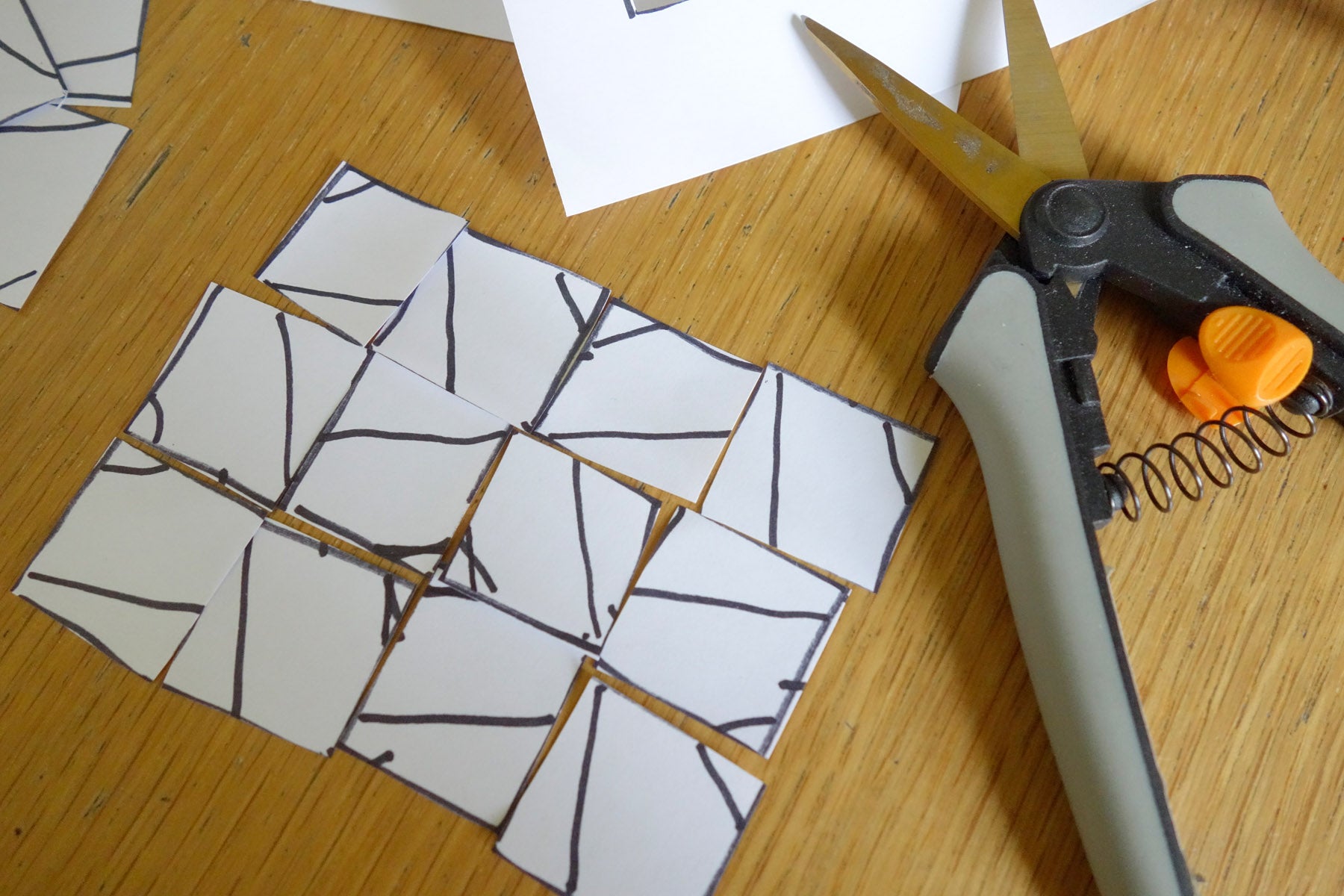By Patricia Belyea
SEATTLE WA I'm not one for the make-a-quilt-in-a-weekend approach. Yet I was challenged to do just that over the Memorial Day Weekend. In four days, I needed to design, create, and finish a graduation quilt for a high school senior at my church.
As it was a holiday weekend, my husband and I journeyed to our cabin in the Okanogan Highlands.
Our property is pretty remote with the closest store a 40-minute drive away. So it behoves me to be prepared with food and quilting supplies when we head out there.

I brought the fabrics I needed for the looming quilt project: two pre-washed bolts of vintage yukata cotton and two pillowcases from the graduate’s childhood. Plus all my sewing gear. Somehow I forgot to bring a suction handle for my 24" gridded ruler, so Michael jerry-rigged a solution with a concrete trowel and duct tape.


I had a concept for a star quilt which I'd sketched a few times. Then I made a set of paper quilt blocks which I spun around to understand where the primary and secondary patterns landed.
Once satisfied with my idea, I made slightly oversized freezer paper templates for the three pieces of each block. (Of course, this is likely a traditional block pattern, but I had fun making the block pattern to suit my size and fabric constraints.)

With no hesitation, I cut up the fabrics and sewed the blocks together. Then I trimmed each block down to 8.5 inches square.
I imposed a rule that the bigger stars would have one butterfly in each elongated triangle while the smaller sized stars would have no butterflies—just the white pillowcase cotton.


Of course, the quilt top shrank as I sewed it together with 1/4 inch seam allowances. To make the quilt bigger, I added a dashed strip and more turquoise floral fabric at the top. The final composition was 57 x 48 inches—too small for a bed quilt but I had run out of butterflies and only had enough turquoise fabric left for the facing. Onward!


To proceed, I pin basted the quilt sandwich—using a back made of the pink yukata cotton, Hobbs Natural Cotton with Scrim batting, and the quilt top.
Once I cleaned my machine, changed the needle, switched to a walking foot, and tested the stitch length on a small sample sandwich, I stitched-in-the-ditch around each block with 50 wt Aurifil cotton thread. (The Hobbs Natural Cotton with Scrim batting allowed me to stitch 8" apart to secure the quilt.)
Can you see that my vintage Bernina 1230 is actually a Riccar? Over 30 years ago, Bernina made this sewing machine in Switzerland and Riccar private-labeled the machine for the Japanese market.



The finishing on this quilt was VERY simple—stitching-in-the-ditch and a flat facing on the back. I decided to add one more element—decorative ties!
Back in Seattle, I bought a bag of fat yarn for $.99 at my local Goodwill store. I used a hammer and awl to punch four holes around the center of the butterfly stars and two holes across the center of the smaller white stars. Two pink pieces of yarn were tied in the larger stars and one white piece of yarn in the smaller stars—using square knots.
Once I had assembled the yarn and tools, the final finishing step added a half-hour to my project.



The quilt was presented to Eleanor Maul at a special church service this past Sunday. I hope Eleanor takes joy in seeing the butterflies from her childhood pillowcases. And that the symbol of butterflies—endurance, change and hope—guide her forward.









